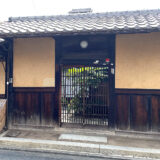Origin and Significance of Setsubun
Setsubun is one of the traditional annual events in Japan and is held on February 3 or 4, the day before the first day of spring. This day has an important meaning as the day to divide “Setsuki,” the turning point of the seasons, to drive away evil spirits and invite good fortune into one’s home.
Bean-throwing custom
The main event of Setsubun is the “Mamemaki” (bean-throwing). Families gather inside and outside the house and say, “Oni wa soto, oni wa soto! Fuku wa uchi! While chanting “Oni wa soto! This is done to drive away demons and evil spirits and bring good fortune to the family. The beans used in the bean-throwing ceremony are believed to have the power to bring good fortune.

Characteristics of the Setsubun Festival at Yoshida Shrine
Yoshida Shrine in Kyoto is known for distinctively celebrating the custom of Setsubun. The Setsubun Festival, held annually on February 3, is one of the most famous in Japan and attracts many worshippers.

History of Setsubun Matsuri
The Setsubun Festival at Yoshida Shrine has a long history dating back to the reign of Toyotomi Hideyoshi. Rituals to drive away evil spirits and invite good fortune have been held in and around the shrine since ancient times.
Setsubun Festival Highlights
The charm of the Setsubun Festival at Yoshida Shrine lies in the richness of traditional rituals and ceremonies. In addition, food stalls are set up in the shrine’s precincts, where visitors can enjoy a variety of food and drinks. Along with the shrine’s atmosphere, visitors can experience Japanese culture.

Yoshida Shrine and Kyoto Culture
The Setsubun Festival at Yoshida Shrine is a rare opportunity to glimpse Kyoto’s traditional culture. Combined with Kyoto’s old streets and traditional architecture, visitors will better understand Japanese culture and history.




